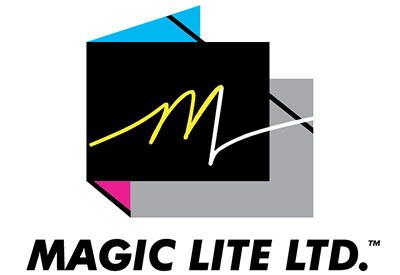Smart Warehouse Technologies: Friend or Money-Pit?

Apr 27, 2021
By David Gordon
Distributors thinking about tomorrow need to be thinking about their warehouse of tomorrow. And in a technology world, this means considering smart warehouse technologies.
Smart warehouses can be implemented in phases. The key is understanding the emerging technologies as they become affordable and deployable with a goal of reducing picking costs, improving productivity and enhancing customer service … all key goals as employee recruitment becomes more challenging (remember, Amazon pays over $17 / hour for warehouse personnel!)
Dick Friedman, a warehouse improvement expert, shares his insights into the world of smart warehouse technology.
The simple 100+ year old pallet is becoming “smart”, joining a host of other smart technologies. Some smart technologies can help electrical distributors increase productivity and/or reduce mistakes. But most technologies are expensive, and benefits are not guaranteed, leaving many to defer adoption until the technology is proven. But the first step is being aware of what smart technologies are available.
A cornucopia of technologies… getting smart
• Powered by batteries, the low-cost smart pallet being developed is designed to carry items from a section of a warehouse on to a truck, and at the customer’s site, travel to where the items are needed. A press release lists a 200 lb. capacity and 3 mph speed. Initially, a human will control this pallet, but future versions would be automatically controlled.
• Radio frequency identification (RFID) refers to a computer chip affixed to a carton or a piece, and the specific data stored (e.g., date of manufacture); special devices are needed to read the data, and the chip must be in the line of sight of the device. The cost per chip is still prohibitive, as is the cost of devices.
• The Internet of Things (IoT) refers to assigning a unique Internet address to a device that acquires and/or transmits data (e.g., a sensor), and/or controls something (e.g., power to an automated conveyor). IoT devices can be programmed and controlled via the Internet and will result in the “connected warehouse.”
• Automated guided vehicles (AGV) are wheeled, powered product-moving machines controlled by signals generated by special warehouse software. In the past the signals came from wires buried in the floor, which is expensive, as is adding new ones. Now, thanks to technology, signals are generated from wireless devices.
An example of an automated storage and retrieval system (ASRS) is a set of bins that move like the steps of an escalator, only the handrails are vertical and the bins pivot on end-rods and so they always remain horizontal. At the command of a worker, the ERP system transmits data to a power-controller, which in turn rotates the bins so that the needed bin is at eye level. This technology enables storing more in a given amount of floor space.
Product is usually loaded onto or taken from an ASRS by people, but newer versions of ASRS can be wirelessly connected to a single-arm robot so product can automatically be loaded onto or taken from the ASRS. Even without ASRS, a single-arm robot can be attached to a vertical shaft that is attached to a post of a stationary shelving unit. It then moves up, down and over to pick products; robots can also put away products.
• Mobile robots can slide under portable shelving units and move the shelving to sorting/staging/packing areas where people make the final decisions. Similarly, these robots can move received product to put-away locations.
• Several companies are experimenting with using drones to move small, light-weight products from delivery trucks onto customers’ job sites. But drones are already being used in warehouses for cycle counting and other activities. Some experiments involve using drones to pick small, light-weight items, and take them to a sorting/staging/packing area. So far, a human, not software, controls each drone.
• Image-based bar code readers allow reading a bar code no matter the direction in which a code is scanned. And these special readers can scan 2-dimensional bar codes, which have been around for a while and contain much more information than traditional bar codes – but not as much as RFID chips.
• Warehouse management system (WMS) refers to a distinct software that is interconnected to the ERP system, and stores data about the weight, dimensions and cube of items, and the dimensions of storage slots. It uses those data to do things such as determining where to put away received items that do not have permanent bin assignments; suggesting changing the arrangement of items with permanent bin assignments (as item velocities change); tracking picker productivity; and comparing picker productivity to management-defined standards.
• Voice directed picking (VDP) refers to a system in which each user wears a device that he or she has “taught” to recognize his/her speech patterns. To each device are attached earphones and a microphone. The ERP system transmits to the VDP server data about each order to pick, and the VDP server stores these data. The VDP software determines which people are available, then transmits data to a specific user device. The device uses the user’s voice, telling the location to go to, the SKU number involved, and the quantity. After picking, the user “tells” the device the SKU number, quantity picked and task performed; that speech is transformed into data, which are transmitted back to the main system (for verification). A similar sequence of steps is used for put away.
Is it likely to be worth the cost?
Although different technologies have different characteristics, the key is having a vision of your future and determining what it will take to efficiently, and cost-effectively, enable you to deliver on your goals… and to deliver for your customers. The first step is developing a plan. This involves understanding the current and desired future state. Then conduct research on what is possible, solicit proposals and do an ROI analysis. This can be done for a system or for specific applications. The most successful companies have a vision and then execute either in total or in a methodical step approach based upon budget availability.
The technology is here, and more is coming. Increased productivity and improved service levels are viable when the right technology is applied.
The key is reducing your cost per line picked. Do you know what yours is? Do you know the industry average? Or what is defined as best in class? Understanding key metrics can enable you to improve productivity and service levels, profitably.
Dick Friedman helps distributors optimize warehouse performance, sometimes with smart warehouse technologies. He objectively determines if a particular technology should or should not be obtained. For worthwhile technologies, Dick helps obtain them, including negotiating contracts that protect the distributor. He is currently working with a number of electrical distributors to improve their warehouse operations. For a FREE consultation contact him: rcfriedman@att.net; www.GenBusCon.com.
Moving forward, distributor gross margins will continue to erode while operating costs, defined as people expenses, increase. If significant growth is part of your plan, identifying strategies to reduce cost/line picked while improving productivity will be critical to success. Smart warehouse technology isn’t for everyone as it requires investment… but if you’re going to be $100M+, it is something you should be evaluating… maybe implementing.
Manufacturers… which distributor warehouses have you been most impressed with? Who has a smart warehouse?
David Gordon is President of Channel Marketing Group. Channel Marketing Group develops market share and growth strategies for manufacturers and distributors and develops market research. CMG’s specialty is the electrical industry. He also authors an electrical industry blog, www.electricaltrends.com. Channel Marketing Group does not engage with clients on detailed pricing strategies, however, given that pricing is a critical element of sales, marketing and growth planning, we do get asked about the topic and can share opinions and refer to those who focus on the area as well as share anecdotes. David Gordon can be reached at 919-488-8635 or dgordon@channelmkt.com.











